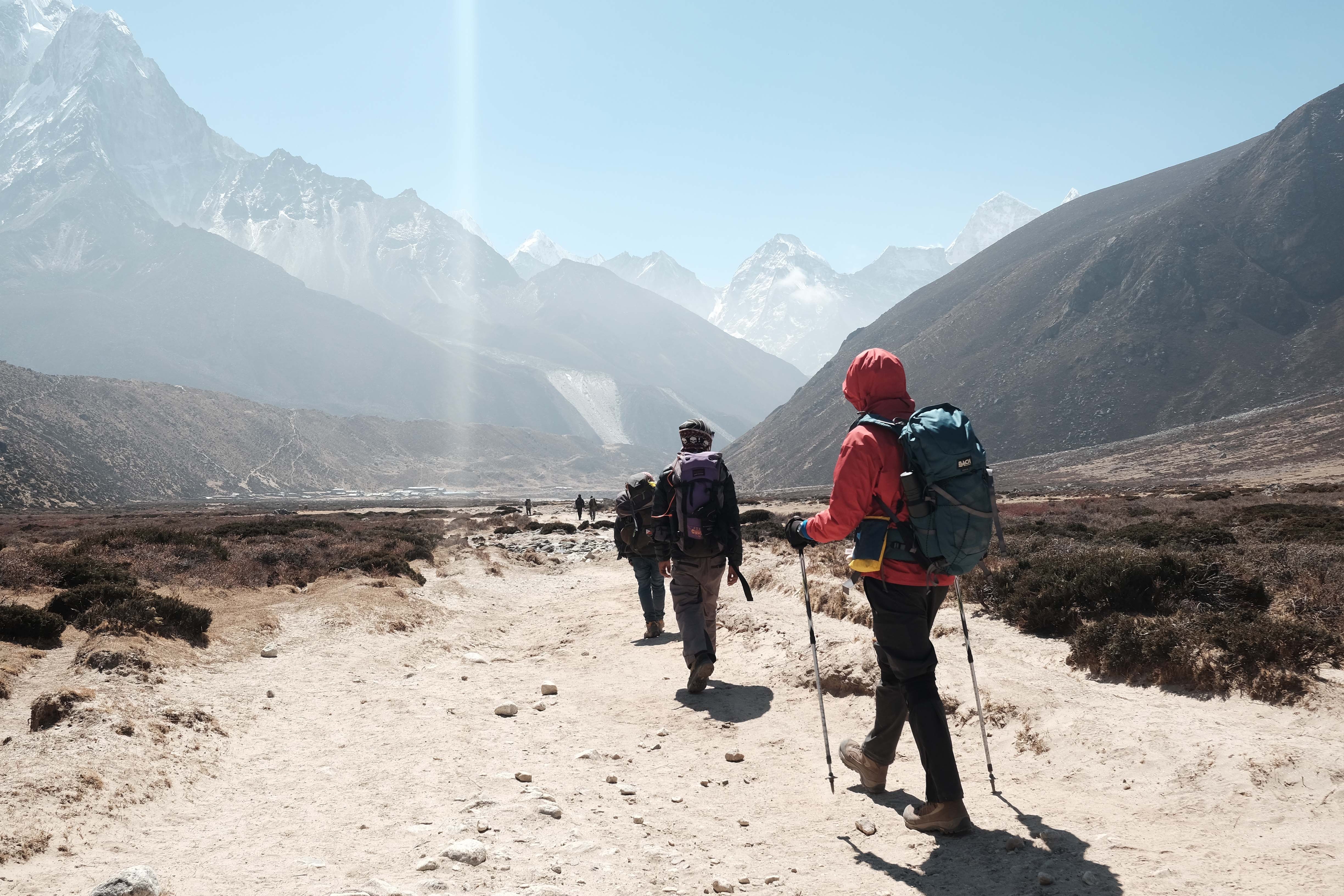Some people would agree that hiking is an outdoor adventure that requires endurance and stability. While others think anyone can hike even without enough preparation beforehand. How is it possible? That’s when trekking poles come to the limelight.
What are trekking poles?
Trekking poles look almost the same as ski poles, only they have handles; and as the name suggests they’re a standard accessory for trekking or hiking. Although some hikers use one (hiking staff) for added support, these sticks usually come in pair.
In choosing one, finding the right length for you is essential. Your trekking pole should give you a 90-degree bend at your elbow when the tips of the poles touch the ground. Some are designed to be adjustable in length which goes from 24 to 55 inches long. You would prefer shorter length for going uphill, while a longer one as you descend.
The shaft is made from either aluminum or carbon, and this feature determines the pole’s overall weight. Among the two, aluminum is the more durable and practical choice while those that are carbon-made are the lighter option.
Another way of trekking poles enhancing one’s stability is its grips, which could are made from either cork, foam, or rubber. They usually come with wrist straps too for additional support.
Other parts include a basket and pole tips. Steel tips are used to provide traction like walking on ice while rubber tips offer protection and are best to use for grounds full of asphalt or other hard surfaces.
1. Improved stability
Trekking, especially if you’re a beginner, can be a challenging outdoor activity. All the more when you trek on the muddy ground. If you require extra hands and legs, then trekking poles are the answer. They improve your balance as you pave your way through rocky terrain. Going on uphill and in need of an extra boost? Don’t worry; you’ve got your poles with you. Adjust its length to elongate it, and you’re ready to descend.
2. Reduces the impact on joints
Of all the body parts used in hiking, most of the injury affects either the joints or the knees. With the use of trekking poles, though, you may go on for hours without straining your leg muscles too much. Holding the poles for about 90 degrees angle from when the tips are on the ground improves your blood circulation, thus stabilizing your heart rate. This scenario eventually leads to avoidance of cramps along the way.
The use of trekking poles also allows redistribution of weight, taking an adequate amount of impact on your back.
3. Handy in an emergency
To be in a place where you’re not usually in imposes a lot of danger. You may encounter wild animals as you go along or poisonous plants that you could potentially step on.
Trekking poles are perfect armor to shoo those wild dogs or even bears away. Or bash down some potentially harmful plants too. Not having to stop to find barks of trees as you encounter such an emergency will not slow you down.
4. Can be used as a safety tool
If at one point on the trail you encounter a running river and you’re half-hearted to cross it, what would you do? Going back should never be an option surely because the goal is to finish the trail. And finding another way could be time-consuming.
But, if you have your trekking poles with you, you can quickly test the depth of the water with just a single poke. Crossing it shall not be an issue as well, because these walking sticks can be a source of additional support.
5. Helpful for clearing the path
When you trek, make sure to respect nature and everything that goes with it. One way in doing so is to use your trekking poles to clear the path in front of you carefully. Use the poles like an extension of your hands to push branches and ferns away from your face. In this manner, you are not killing any plant nor disturbing any small animals or insects that are naturally living there.
6. Can erect a shelter
Trekking poles don’t just provide support for you, but also to your temporary shelter as you spend the night in the wilderness.
If you are a light packer, you must’ve chosen tents that are not bulky, therefore pole supported. These walking sticks are sturdy enough to hold one and could withstand strong winds or even rains.
If you are not hiking overnight, trekking poles can also be used to hold up your backpack or hiking boots as you take your well-deserved rest from time to time.
Conclusion
While some hikers do not like the idea of carrying trekking poles on a hike; there are also a lot who swear by them. Remember that they are a standard hiking accessory, especially for someone who requires extra support and balance to finish off a trail.

